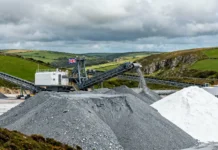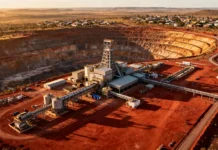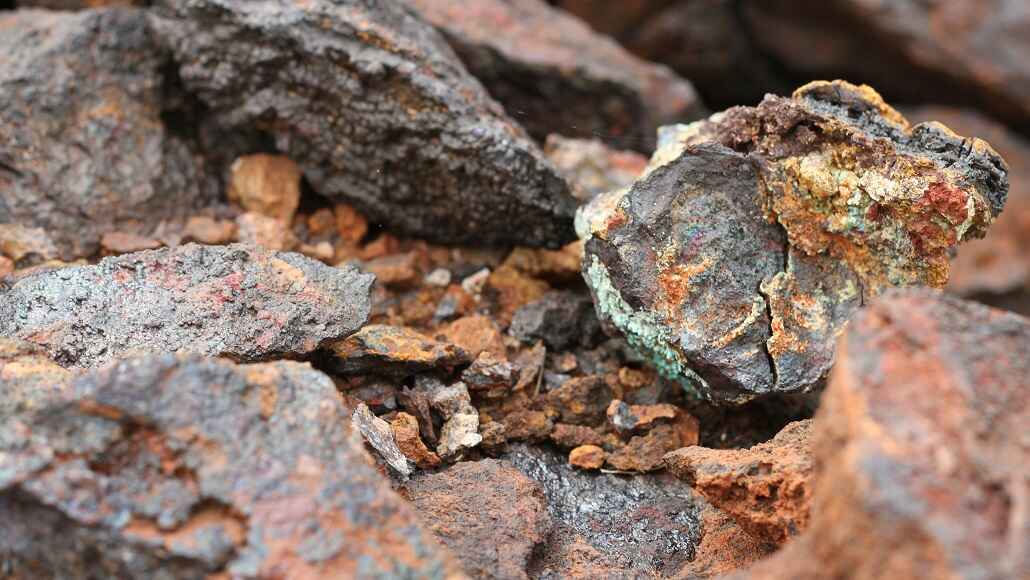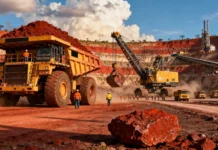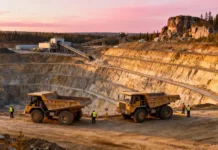Managing Water Scarcity Through Sustainable Mining Practices
Water represents both essential resource and significant challenge for mining operations globally. Mining processes consume enormous quantities of water for ore processing, dust suppression, cooling systems, and employee needs. Yet mining operations increasingly locate in water-scarce regions where local water availability cannot support historical consumption patterns. This tension between mining’s water requirements and environmental constraints represents one of the industry’s defining challenges.
Forward-thinking mining companies recognize that water scarcity isn’t distant environmental concern but immediate operational constraint affecting profitability and license to operate. Water management in mining has evolved from peripheral environmental compliance issue into central operational and strategic consideration. Mining companies implementing advanced water recycling, desalination technologies, and closed-loop systems demonstrate that sustainable water practices enable maintaining production while reducing consumption and environmental impact.
The Water Consumption Reality in Mining
Mining’s water consumption varies dramatically based on ore type, processing methods, and geographic location. Copper mining typically consumes 2-5 million gallons of water per ton of ore processed. Gold mining often requires 3-8 million gallons per ton extracted. Some operations in arid regions consume locally available freshwater at rates exceeding total regional water availability, creating unsustainable situations where mining operations deplete regional aquifers and compromise local water security.
Traditional mining approaches treated water as inexpensive commodity to be used liberally then discharged. This paradigm made economic sense when water was abundant and free. Today, this approach creates multiple problems. In water-scarce regions, mining operations increasingly face water rationing, competing demands from agriculture and municipalities, and regulatory requirements limiting water consumption. Environmental organizations and local communities increasingly oppose mining expansion in water-stressed regions. Investors increasingly scrutinize water management as ESG risk factor.
Water Quality and Treatment Challenges
Beyond consumption volume, mining creates water quality challenges. Mining and processing operations generate wastewater containing dissolved minerals, metals, and chemical residues. Traditional mining simply discharged this water into rivers or watersheds, externalizing environmental costs. Regulatory frameworks worldwide increasingly require treating wastewater to meet discharge standards before environmental release.
Water recycling systems have emerged as primary mechanism for addressing both consumption and quality challenges. Rather than discharging wastewater, recycling systems treat and reuse water multiple times within mining operations. This simultaneously reduces freshwater consumption and minimizes discharge volume requiring treatment before environmental release.
Advanced Water Recycling Technologies
Modern water recycling systems employ multiple complementary technologies enabling high recovery rates and water quality suitable for reuse. Filtration systems remove particulate matter; chemical treatment removes dissolved contaminants; reverse osmosis purifies water to near-distillation quality. Combining these technologies creates water recycling systems achieving 80-95 percent recovery rates.
Mining operations implementing comprehensive water recycling typically recirculate water 3-5 times through processing systems before eventual discharge. A water molecule might be used for initial ore processing, then recovered and used for dust suppression, subsequently employed in cooling systems, then treated and recycled back to processing. This multiple-use approach dramatically reduces net water consumption compared to once-through systems where water is used once then discharged.
The economics of water recycling have improved substantially. Recycling system capital costs have declined while water scarcity and regulatory requirements have increased water costs. In many mining regions, water recycling now proves economically attractive compared to paying escalating water prices. Additionally, recycled water systems reduce wastewater treatment requirements, further improving economics.
Desalination as Water Supply Solution
Mining operations in coastal regions increasingly employ desalination to generate freshwater from seawater, eliminating dependence on limited regional freshwater supplies. Desalination technologies have matured and costs have declined substantially. Modern desalination plants operate reliably at scales suitable for large mining operations.
Desalination enables mining operations in coastal regions to achieve truly sustainable water management. Rather than consuming limited regional freshwater, operations produce freshwater from essentially infinite seawater supplies. Environmental impact shifts from groundwater depletion to manageable brine discharge concentrated into ocean rather than freshwater aquifers. This approach has enabled mining expansion in water-stressed coastal regions without compromising local water security.
The sustainability benefits extend further when desalination systems incorporate renewable energy. Solar-powered desalination systems in sunny mining regions generate freshwater sustainably without requiring additional grid electricity. Some mining operations are beginning to deploy these systems, demonstrating how clean energy and water management integrate into comprehensive sustainability strategies.
Closed-Loop Mining and Zero-Discharge Systems
Advanced mining operations increasingly pursue closed-loop water systems where virtually all water remains within mining operations and no discharge occurs to external environments. These systems require sophisticated water treatment enabling pure water recirculation while managing mineral and contaminant removal.
Closed-loop systems prove technically complex and capital-intensive but deliver dramatic environmental and operational benefits. Mining operations achieving near-zero water discharge eliminate wastewater discharge environmental liabilities, reduce regulatory compliance burdens, and often reduce total water costs through minimized external water purchases. Furthermore, zero-discharge systems avoid conflicts with local communities and environmental organizations over water use, improving social license to operate.
Early adopters of closed-loop systems are predominantly large mining companies with capital access and operations in water-stressed regions where sustainability imperatives prove strongest. As technology matures and costs decline, closed-loop systems will likely become industry standard rather than exceptional practice.
Rainwater Harvesting and Stormwater Management
Sustainable water management in mining increasingly incorporates rainwater harvesting systems capturing precipitation directly for use in mining operations. This represents water source previously wasted through runoff into regional watersheds. Mining operations in regions receiving substantial rainfall can reduce freshwater requirements 20-40 percent through effective rainwater capture systems.
Stormwater management similarly provides water opportunities. Rather than allowing stormwater runoff to cause erosion and environmental degradation, mining operations capture stormwater in holding systems where it settles before being used for processing or dust suppression. This approach simultaneously reduces environmental impact and provides additional water source for mining operations.
Groundwater Protection and Responsible Extraction
Water management in mining increasingly emphasizes protecting groundwater resources while meeting mining operational requirements. Traditionally, mining operations pumped groundwater liberally for processing needs without considering depletion implications. Responsible water management recognizes groundwater as finite resource requiring careful stewardship.
Modern approaches employ systematic groundwater monitoring, careful extraction management, and recharge considerations in water sourcing decisions. Some mining operations now invest in artificial aquifer recharge systems, where treated water is deliberately recharged into depleted aquifers during production periods, ensuring long-term groundwater sustainability. This approach proves economically rational when regulatory frameworks or stakeholder expectations require groundwater protection.
Community Water Security and Stakeholder Engagement
Sustainable water management in mining extends beyond operational efficiency into community water security. Mining operations increasingly recognize that healthy communities surrounding mining sites depend on adequate water access. Companies failing to protect community water security face opposition, regulatory challenges, and license-to-operate risks.
Forward-thinking mining companies are implementing programs ensuring mining water management doesn’t compromise community water security. These range from funding community water infrastructure improvements to purchasing expensive external water supplies to ensure community needs are met before mining consumption. While these programs require capital investment, they represent strategic investment in social license to operate and long-term operational sustainability.
The Future of Water Management in Mining
The trajectory of water management in mining points toward increasingly sophisticated, sustainable, and economically attractive practices. Emerging technologies like advanced membrane systems, artificial intelligence-optimized water treatment, and integrated recycling systems will enable achieving higher recovery rates and lower costs. Regulatory frameworks will continue tightening, making sustainable approaches increasingly necessary.
Mining companies positioned as leaders in water management will likely enjoy competitive advantages as water constraints intensify and regulatory frameworks tighten. Operations demonstrating genuine commitment to water sustainability will maintain social license to operate in water-stressed regions where operations lacking such commitment will face opposition. For mining companies making long-term strategic decisions, investing in sustainable water management represents simultaneous environmental responsibility and business necessity ensuring long-term operational viability.




